 |
King of Chemicals Manufacturers |
Specifications, Properties, Uses, SDS of Riboflavin or Vitamin B2 USP BP Ph Eur FCC Food Grade Manufacturer Supplier Exporter Wholesale & Small Packs, CAS Number 83-88-5. |
|
| King of Chemicals has several associated companies having accreditations like cGMP, GLP - FDA Approved Good Manufacturing Practice and Good Laboratory Practice of WHO standard, ISO-9001, ISO-14001, ISO/IEC 17025, ISO ISO-45000, HACCP, FSSC 220000, FSSAI, "REACH" Registered, Kosher & Halal Certified. e-CTD and DMF support can be made available if needed. We offer USP NF BP Ph Eur EP IP JP Analytical Reagent FCC Food Grade Chemicals & Nutraceuticals. | |
        |
|
Muby Chem Pvt. Ltd. is a several decades old group of companies, engaged in manufacturing, supplying, distributing, wholesale supplies of Riboflavin or Vitamin B2 USP BP Ph Eur FCC Food Grade for actual users, including retail or small pack supplies for research and development work.
We supply fine and speciality chemicals, pharmaceutical excipients, mineral fortifiers in chemically pure, analytical reagent grade, IP BP USP Ph Eur EP JP and other pharmaceutical grade monograph including FCC Food grade chemicals and Nutraceuticals at best prices. We and/or our associated units have all the facilities to supply as per cGMP standard observing good manufacturing practice and good laboratory practice. We can assure low microbial count and also offer a test certificate for the same. We maintain warehouses across USA, India, and UAE. Our group exports to USA, Canada, Mexico, Argentina, Brazil, Chile, Korea, Malaysia, Thailand, Indonesia, Europe, and several other parts of the world. We supply in wholesale container loads to small pack of few grams. Solid products may be specified for it size and shape as desired by the buyer.

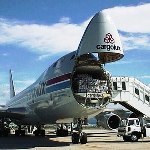
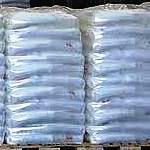

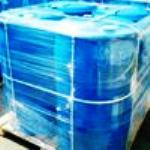
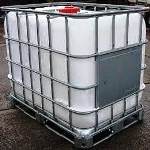
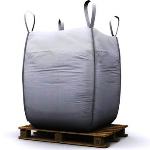
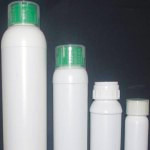

Riboflavin or Vitamin B2 CAS Number 83-88-5
For Properties Specifications Uses of Riboflavin or Vitamin B2 Click Properties, Specifications, Uses, Price, Process of Riboflavin or Vitamin B2 Manufacturer.
For For SDS MSDS Sheet of Riboflavin or Vitamin B2 Click SDS Safety Data Sheet MSDS Sheet of Riboflavin or Vitamin B2 Manufacturer.
The Properties, Specifications, Monograph and Uses of Riboflavin or Vitamin B2:
Riboflavin, also known as vitamin B2, is a vitamin found in food and sold as a dietary supplement. Riboflavin is added to some food products, and available as a dietary supplement. In foods it has an E number of E101, E101(iii).
Riboflavin BP Ph Eur Grade Specifications:
C17H20N4O6 --- 376.4 CAS 83-88-5
Action and use: Vitamin B2.
DEFINITION
7,8-Dimethyl-10-[(2S,3S,4R)-2,3,4,5-tetrahydroxypentyl]benzo[g]pteridine-2,4(3H,10H)-dione.
This monograph applies to riboflavin produced by fermentation.
Content: 97.0 per cent to 103.0 per cent (dried substance).
CHARACTERS
Appearance: Yellow or orange-yellow, crystalline powder.
Solubility: Very slightly soluble in water, practically insoluble in ethanol (96 per cent).
Solutions deteriorate on exposure to light, especially in the presence of alkali.It shows polymorphism.
IDENTIFICATION
A. Specific optical rotation.
B. Thin-layer chromatography.
C. Dissolve about 1 mg in 100 mL of water. The solution has, by transmitted light, a pale greenish yellow colour, and, by reflected light, an intense yellowish-green fluorescence which disappears on the addition of mineral acids or alkalis.
Specific optical rotation: -115 to -135 (dried substance).
Dissolve 50.0 mg in 0.05 M sodium hydroxide free from carbonate and dilute to 10.0 mL with the same alkaline solution. Measure the optical rotation within 30 min of dissolution.
Absorbance:
Test solution Dilute the final solution prepared for the assay with an equal volume of water.
Absorption maxima at 223 nm, 267 nm, 373 nm and 444 nm.
Absorbance ratios:
— A373/A267 = 0.31 to 0.33;
— A444/A267 = 0.36 to 0.39.
Related substances: To pass the test.
Loss on drying: Maximum 1.5 per cent, determined on 1.000 g by drying in an oven at 105C.
Sulfated ash: Maximum 0.1 per cent, determined on the residue obtained in the test for loss on drying.
Riboflavin USP Grade Specifications:
C17H20N4O6 376.36
Riboflavine CAS 83-88-5
UNII: TLM2976OFR
DEFINITION
Riboflavin contains NLT 98.0% and NMT 102.0% of riboflavin (C17H20N4O6), calculated on the dried basis.
IDENTIFICATION
A.
Color and Fluorescence of Solution:
Sample solution: 0.01 mg/mL in water
Analysis: Alternately expose to transmitted light and long-wavelength UV light.
Acceptance criteria: The Sample solution is pale greenish yellow by transmitted light. By reflected light, it exhibits an intense yellowish-green fluorescence that disappears upon the addition of mineral acids or alkalies.
Residue on Ignition: NMT 0.3%
Limit of Lumiflavin: To pass the test.
Optical Rotation, Specific Rotation:
Sample solution: 5 mg/mL in 0.05 M carbonate-free sodium hydroxide.
Analysis: Measure the specific rotation within 30 min of preparation.
Acceptance criteria: −115° to −135°
Loss on Drying: Dry 500 mg at 105C for 2 h. It loses NMT 1.5% of its weight.
Riboflavin FCC Food Grade Specifications:
Vitamin B2
C17H20N4O6 Formula weight 376.37
INS: 101(i) CAS 83-88-5
DESCRIPTION
Riboflavin occurs as a yellow to orange-yellow, crystalline powder. When dry, it is not affected by diffused light, but when in solution, light induces deterioration. It melts at about 280° with decomposition, and its saturated solution is neutral to litmus. One-gram dissolves in 3000 to about 20,000 mL of water, the variations being due to differences in the internal crystalline structure. It is less soluble in alcohol than in water. It is insoluble in ether and in chloroform, but it is very soluble in dilute solutions of alkalis.
Function: Nutrient.
Identification: A solution of 1 mg of sample in 100 mL of water is pale green-yellow by transmitted light and has an intense yellow-green fluorescence that disappears on the addition of mineral acids or alkalies.
Assay: Not less than 98.0% and not more than 102.0% of C17H20N4O6, calculated on the dried basis.
Loss on Drying: Not more than 1.5%.
Lumiflavin: Passes test.
Optical (Specific) Rotation: [α]D25°: Between +56.5° and +59.5°, calculated on the dried basis.
Residue on Ignition: Not more than 0.3%.
The MSDS-SDS Hazard Statement of Riboflavin or Vitamin B2:
Riboflavin or Vitamin B2 SDS Sheet, Safety Data Sheet
MSDS Sheet, Material Safety Data Sheet 12-April-25
1. Product Identification
Product Name & Other Names: Riboflavin or Vitamin B2.
CAS No.: 83-88-5
EINECS EC Code: 201-507-1
Relevant uses and uses advised against (if any): Industrial Manufacturing.
2. Hazards Identification
GHS, Globally Harmonized System Classification in accordance with 29 CFR 1910
Classification according to Regulation (EC) No 1272/2008
Not a hazardous substance or mixture according to Regulation (EC) No. 1272/2008.
This substance is not classified as dangerous according to Directive 67/548/EEC.
Labeling according to GHS & Regulation (EC) No 1272/2008
GHS Label Elements NONE |
Signal Words: None
Precautionary statements:
P261: Avoid breathing dust/fume/gas/mist/vapors/spray.
P262: Do not get in eyes, on skin, or on clothing.
P281: Use personal protective equipment as required.
P302+P352: IF ON SKIN: Wash with plenty of soap and water.
P304+P340: IF INHALED: Remove victim to fresh air and keep at rest in a position comfortable for breathing.
P305+P351+P338: IF IN EYES: Rinse cautiously with water for several minutes. Remove contact lenses, if present and easy to do. Continue rinsing.
P337+313: If eye irritation persists get medical advice/attention.
3. Composition/Information on Ingredients
Product Name & Other Names: Riboflavin or Vitamin B2.
CAS No.: 83-88-5
EINECS EC Code: 201-507-1
4. First Aid Measures
Always seek medical advice after the first aid treatment.
Inhalation: If inhaled, remove to fresh air. If not breathing, give artificial respiration. If breathing is difficult, give oxygen. Get medical attention.
Ingestion: Contact medical center quickly. Never give anything by mouth to an unconscious person. Get medical attention.
Skin Contact: Immediately flush skin with plenty of water for at least 15 minutes. Remove contaminated clothing and shoes. Get medical attention.
Eye Contact: Check for and remove any contact lenses. Immediately flush your eyes with running water for at least 15 minutes, keeping eyelids open. Get medical attention.
5. Fire Fighting Measures
Combustible at high temperature. High heat or direct flame is necessary to cause ignition. Toxic fumes, carbon monoxide and nitrogen oxides may be formed in fire.
Explosion: At high temperature, explosive vapor-air mixtures may be formed.
Fire Extinguishing Media: Dry chemical, foam, water spray or carbon dioxide. Do not use a solid stream of water since the stream will scatter and spread the fire. Water spray may be used to keep fire exposed containers cool.
Special Information: In the event of a fire, wear full protective clothing and NIOSH-approved self-contained breathing apparatus with full face piece operated in the pressure demand or other positive pressure mode.
6. Accidental Release Measures
Personal precautions, protective equipment, and emergency procedures: Avoid breathing dust/fumes/gas/mist/vapors/spray. Use individual protective equipment (waterproof boots, suitable protective clothing, safety glasses, etc.).
Environmental precautions: Do not let the product enter drains, soil, or water sources.
Methods and materials used for containment cleanup procedures and Storage:
Avoid dust formation. Keep away from heat. Keep away from sources of ignition. Provide ventilation. Contain spilled material. Cover with an inert, non-combustible absorbent material, (e.g., sand, earth, diatomaceous earth, vermiculite). Vacuum or sweep-up and remove to an approved disposal container.
7. Handling and Storage
Precautions for safe handling: Apply according to good manufacturing and industrial hygiene practices. Ensure proper ventilation. Wash thoroughly after handling. Do not drink, eat, or smoke while handling. Avoid contact with skin, eyes, and clothing. Minimize dust generation. Avoid breathing dust/fumes/gas/mist/vapors/spray. Keep container tightly closed. Avoid ingestion and inhalation. Use individual protective equipment (waterproof boots, suitable protective clothing, safety glasses, etc.).
Conditions for safe storage, including any incompatibilities: Keep away from heat and source of fire. Store in cold, dry, and ventilated area away from heat sources and protected from sunlight in tightly closed original container. Keep air contact to a minimum. Do not breathe dust. Do not leave the material container open. Store protected from heat, sparks and ignition sources and incompatible materials. Avoid inhalation of dust/mist/vapor. Do not store with incompatible materials like oxidizing material. Storage: Room temperature. Preferably refrigerate. In a light resistance container.
8. Exposure Controls/Personal Protection
Airborne Exposure Limits: The product does not contain any relevant quantities of materials with critical values that have to be monitored at the workplace.
Ventilation System: A system of local and/or general exhaust is recommended to keep employee exposures low.
Personal Respirators (NIOSH Approved): For conditions of use where exposure to the substance is apparent and engineering controls are not feasible, consult an industrial hygienist.
Skin Protection: Wear impervious protective clothing, including boots, gloves, lab coat, apron, or coveralls, as appropriate, to prevent skin contact.
Eye Protection: Use chemical safety goggles and/or a full-face shield where splashing is possible. Maintain eye wash fountain and quick-drench facilities in work area.
Other Control Measures: Maintain good housekeeping in work area. Handle in accordance with good industrial hygiene and safety practice.
9. Physical and Chemical Properties
Appearance: Orange yellow crystalline powder.
Odor: No data found.
Odor threshold: No data found.
pH: 5.5 - 7.2 for 0.07 g/l in water @ 20C.
Melting point: 280C to 290C literature..
Boiling point: 710C (Predicted).
Relative density: 1.65 (Predicted).
Flash point: No data found.
Auto-ignition temperature: No data found.
Decomposition temperature: No data found.
Upper/lower flammability or explosive limits: No data found.
Vapor pressure: No data found.
Vapor density: No data found.
Evaporation rate: No data found.
Flammability (solid, gas): No data found.
Partition coefficient: n-octanol/water: No data found.
Solubility: Very slightly soluble in water.
Viscosity: No data found.
10. Stability and Reactivity
Stability: Stable under ordinary conditions of use and storage.
Hazardous Decomposition Products: Carbon dioxide, carbon monoxide, nitrogen oxides and toxic fumes may form when heated to decomposition.
Hazardous Polymerization: Not reported. However, it can explode under certain conditions.
Incompatibilities: Strong oxidizing agents, heat, and sparks.
Conditions to Avoid: Heat, flames, sunlight, ignition sources and incompatibles.
11. Toxicological Information
LD50 Oral - Rat - >10000 mg/kg.
LC50 Inhalation - Rat - 4 h: >5.4 mg/l - dust/mist.
Carcinogenicity: No component of this product present at levels greater than or equal to 0.1% is identified as possible or confirmed human carcinogen by IARC, ACGIH, OSHA and NTP.
Teratogenic Effects: No data found.
Mutagenic Effects: No data found.
Developmental Toxicity: No data found.
Reproductive Effects: No data found.
12. Ecological Information
Toxicity to fish: static test LC50 - Danio rerio (zebra fish) - > 10.000 mg/l - 96 h
Toxicity to daphnia and other aquatic invertebrates: EC50 - Daphnia magna (Water flea) - > 47,4 mg/l - 48 h.
Mobility: No data found.
Biodegradability: Expected to be biodegradable
Results of PBT and vPvB assessment: No data found for assessment.
13. Disposal Considerations
Whatever cannot be saved for recovery or recycling should be managed in an appropriate and approved waste disposal facility. Follow all the pollution control laws.
14. Transport Information
DOT USA & ADR/RID Europe: Not controlled.
IMDG/IMO: Not controlled.
IATA/ICAO: Not controlled.
15. Regulatory Information
USA:
SARA 311/312 Hazards: See section 2.
California Prop. 65 Components: Not listed to cause cancer or birth defects or reproductive harm.
Disclaimer:
**************************
Our company provides this MSDS sheet in good faith but makes no representation as to its comprehensiveness or accuracy. This SDS sheet is intended only as a guide to the appropriate precautionary handling of the material by a properly trained person using this product. The above information has been compiled from various sources and has the possibility of discrepancy and being out-dated information. Individuals receiving the information must exercise their independent judgment and do further search in determining its appropriateness for a particular purpose. In no case shall our company be liable to loss or damages by the product user.
**************************

Riboflavin or Vitamin B2 Manufacturers, Suppliers, Exporters, Wholesalers:
King of Chemicals manufacturers

Plot No. 2900/46&47 + 2900/163to167, GIDC, Ankleshwar, Dist. Bharuch, India
India, USA, UAE
TEL: (Office) 91-22-23774610, 91-22-23723564
e-mail: info@kingofchemicals.com
Copyright and Usual Disclaimer is Applicable --- April 12, 2025
If I give you “My Word” Nobody can undo it.
If I sign an “Agreement” my Lawyer will undo it
Our products are for industrial and laboratory use only. The user must test the material before use. We are not dispensing chemists or druggist and do not offer over the counter type (OTC) products for medical use by individuals.
We and our associates manufacture pure chemicals surpassing Monograph Specifications of Analytical Reagent Standards, British & European Pharmacopoeia BP Ph Eur EP Standard, US Pharmacopoeia USP NF Standard, Indian Pharmacopoeia IP Standard, Japan Pharmacopoeia JP Standard, FCC Food Grade Standard. |
|
All-Rac-Aplha-Tocopherol or DL alpha-Tocopherol or Vitamin E |
|